- Home
- Isaac Hooke
Worlds at War (A Captain's Crucible Book 5) Page 2
Worlds at War (A Captain's Crucible Book 5) Read online
Page 2
Well, that wasn’t true. There were a few die-hard xenophobes who were pleased as could be. Their counterparts higher-up in the navy would be jovial as well when the news arrived that the Raakarr were no longer a threat. Or rather, that the Elk faction of the Raakarr were no longer a threat. Who could say how many Zarafe were still out there? Valor, leader apparent of the Zarafe, claimed the Zarafe populations had numbered only a tenth of the Elk, with their population mostly relegated to colonies spread along the outskirts of Raakarr space, far away from the Slipstreams that connected to human territory. But Valor might very well have been lying about the numbers. And even if Valor spoke truly, now that the Elk were defeated, the Zarafe were set to become the dominant members of their species. No longer would they have to suffer the second-class planets the Elk deigned to give them, but could pick and choose from among the best for their people. Ten, twenty years down the road, humans might be facing war once again with the Raakarr, though this time with the Zarafe faction.
Jonathan sighed. Never ends, does it?
He thought of what Valor had admitted recently. Apparently, about eight hundred million Zarafe had resided on the homeworld, too, though the population had been segregated from the Elk, and most lived in abject poverty. Their loss had been seen as a necessary sacrifice by the space-based Zarafe.
Eight hundred million of their own brothers and sisters.
A cold species. If they were ready to sacrifice so many of their own to consolidate power within their species, who could say what else they were willing to do to expand that power. It was a very good thing that the United Systems hadn’t given them any planet killers.
Even so, the United Systems was certainly going to take some major flak from the other spacefaring governments for its foreign policy when it was discovered what the battle group had done to the homeworld. Dealing with the political fallout wasn’t going to be fun—there would probably be a few resignations among the senior command. Jonathan was worried he was going to be made a scapegoat for what happened. He had been the one in direct command of the Talon after all, the alien vessel that had harbored the Zarafe crew during the mission. In fact, the more he thought about it, the more he was convinced that Vice Admiral Levieson had put the Talon under Jonathan’s command specifically so that the vice admiral and Admiral Ford could escape culpability in case things went south.
Not that Jonathan cared all that much. In fact he was happy to take the fall, for the most part. The only problem was that he didn’t want to spend the next ten years rotting in a military prison, trapped in the “rehabilitation program” of a VR pod. Still, he wasn’t sure he wanted to work for a navy that went about destroying the homeworld of every alien species it had a disagreement with.
Though to be fair, the battle group had no idea they were bombing a homeworld. The Zarafe had deceived them, telling the fleet it was merely a colony world of five million inhabitants. Valor claimed the telepath Barrick had misunderstood him, and insisted that he had told humanity the colony was the Elk homeworld from the very beginning. He went on to assure Jonathan that humanity would not regret eliminating the Elk home planet, and claimed that the Elk were a race of warmongers who would have attacked Earth if left unchecked anyway. The assertion echoed what Barrick had told Jonathan privately. He wasn’t sure he believed either one of them.
Jonathan folded his hands on the desk and gazed at the false portal of stars generated by his aReal on the bulkhead of his office. He accessed the menu system for the portal and dropped in an image of Earth as viewed from orbit. He shook his head. Ordinarily the sight would have relaxed him. Instead it only intensified his guilt.
How can I ever look at my homeworld the same way again, after what we did to the Raakarr?
three
Jonathan quickly dismissed the planet from the augmented reality overlay. He wanted to end this mission and go home so very badly, and yet he felt he did not deserve to. He wouldn’t force his feelings onto the rest of the crew of course. When the opportunity to return came, he wouldn’t turn it down.
He accessed aft external camera A19 and deep space filled his vision. He rotated the view until he found the thin, flat circle he was looking for. A bite seemed taken out of the upper right so that it reminded him of a woman’s earring. That circle would be the return Gate to Raakarr-1. Near the gap resided the boxlike vessel of the Builder, which was laying the foundation for the final portion. At about ninety-five percent complete, the Gate would be finished in another week and a half.
At that point, the fleet would reestablish contact with NAVCENT. Because the aliens had technology that allowed them to traverse Slipstreams without Gates, about two weeks after the Elk homeworld had fallen, the admiral had dispatched a team via the Talon to Raakarr-1 to update NAVCENT. The team had returned shortly thereafter and shared the congratulations from Central Command along with a statement from the commander-in-chief expressing regret regarding the loss of the Elk homeworld.
During the many months since then, the Zarafe had sent scouts back and forth between the current system, Raakarr-2, and the adjacent Raakarr-1 to receive updates from reprogrammed alien fighters left behind in Raakarr-1 and the neighboring Vega 951 system. Although the fighters could not communicate with the human ships, all seemed well in those adjacent systems, and no further Raakarr attacks had come from the 3-Vega Slipstream in Vega 951.
Assuming of course that the information provided by the Zarafe was accurate.
Jonathan wasn’t sure what to believe. The reports were probably true. Still, a part of him feared what Barrick had told him after the battle group had destroyed the Elk homeworld. “The safety of the Earth is still gravely at stake.”
Maybe the telepath is wrong. Barrick already admitted he can’t see the future with absolute certainty, not anymore. So many paths have changed.
But then again, the telepath also said that there were certain key waypoints that were unavoidable, and that humanity was marching inexorably toward one of them at the moment.
What if the Zarafe had staged a surprise attack on Earth while much of the United Systems fleet was out there dealing with the Elk? He wouldn’t put such treachery past the aliens. Or what if the Sino-Koreans had planned some sort of attack or uprising? Neither scenario would have surprised Jonathan at that point.
He shook his head. The captain could speculate until he was blue in the face. It wouldn’t help matters. They would know for certain in a week and a half, he supposed. He had urged the admiral to send a team via the Talon so that the fleet could confirm matters for themselves, and she had done so. But oddly enough, when the team had returned, the admiral had refused to answer any more of his calls: an automated message told him to address all inquiries to the vice admiral. When Jonathan had done so, Levieson had assured him that everything was fine.
Jonathan sighed. Perhaps he was being overly suspicious.
He swiveled the camera, taking in the clusters of ships orbiting near the Gate. He saw the seventy-five United Systems starships, the survivors of the hundred-plus battle group that had taken on over two thousand alien vessels and thirty-five hundred of their fighters, and won. The Zarafe had helped immensely, of course, with their malware injection that had temporarily disabled the enemy fleet. But it was a few brave MOTHs and some quick thinking on Jonathan’s part that had seen the mission through to completion.
He steered the camera past the United Systems fleet to the fierce-looking alien ships that were now part of the battle group’s ranks, all sharp points and burnished hulls. The admiral had appropriated thirty vessels from the ranks of the conquered aliens to form an “honor guard” for the human fleet. The ships included twelve that had been in orbit above the homeworld and had escaped the calamitous expulsion of the crust. The remainder were gleaned from the other colonized moons that revolved around the common ice giant shared by every natural satellite in the system, including the former homeworld.
The Zarafe crewed twenty-five of those alien ships, the ot
her five were manned by Elk, as per the rough treaty ironed out between the Elk, Zarafe, and the representatives of the United Systems. The ship classes included five capital variants, five pyramids, five Reach classes, five lasers, and ten darts. The Elk were given control of five of the dart ships, which showed how little the Zarafe regarded them, since those were the weakest vessels of the bunch. Distrust no doubt also factored into their decision.
He switched to forward facing camera F3 and had the local AI of his aReal direct the view toward the recorded position of El-Rak IV, fourth colonized moon of the ice giant. At ten million inhabitants, El-Rak IV was the most populous of the alien colony worlds orbiting the ice giant, and contained the greatest number of surviving Elk. After the loss of the homeworld, the Zarafe had annexed the third moon and its colony for themselves, forcing the Elk majority to leave the colony for the fourth moon. At least a million had migrated over the span of a few months, with ferry ships in constant operation between the two. Colony IV’s infrastructure was probably stretched to the limits given the relatively massive influx in such a short amount of time.
Jonathan zoomed in on El-Rak IV and could see the bright white dots scintillating in orbit above the colony. Some of those would be the artificial satellites that generated the magnetosphere, others the giant mirrors that diverted light from the four stars to the surface. Several more would be Raakarr vessels in orbit, their metallic, burnished faces glistening in the sunlight. The Zarafe were in control of most of those ships, using Zarafe draftees and volunteers gathered from the different colony worlds.
There was a total of about four hundred alien ships in orbit, keeping the Elk populace below in check. In addition to those that had lived there or migrated from the third moon, many more had come in the months since the destruction of the homeworld, Elk vessels steadily arriving from the two Slipstreams 2-Vac and 3-Vac on the far side of the system. All incoming Raakarr ships were summarily instructed to proceed to the fourth moon of the ice giant with Zarafe-manned escorts. Once there, the Elk personnel were forced to transfer to the surface, and a Zarafe crew assumed control.
It was a precarious political situation. When a small minority ruled over a vast majority, war and upheaval were the usual outcomes, as illustrated by several examples throughout human history. Then again, these were not human beings. Their thinking was alien, as was their culture. Perhaps they would readily submit to their conquerers.
Somehow, Jonathan doubted it.
The preliminary treaty the United Systems representatives had negotiated essentially divvied up the spoils of war between the victors. To the Zarafe went ninety-percent of the prime colonies formerly owned by the Elk, along with eighty percent of the Elk navy. The treaty granted the United Systems ownership of the adjacent systems, Raakarr-1 and Vega 951, as well as the thirty alien ships of the honor guard. Two hundred Raakarr ships were to be delivered at a later date, along with the specifications for the Raakarr Slipstream traversal technology. Alien engineers were to be supplied to help with the incorporation of said tech, pending completion of the AI-assisted translation initiative under development by the liaison officer to the aliens, an Artificial named Wethersfield. The liaison officer was working remotely with scientists and linguists throughout the fleet to develop a workable solution that would eliminate the current reliance upon their sole translator, Barrick.
The United Systems and the Raakarr agreed not to make any further incursions into the space of either side. To ensure compliance with the treaty, the United Systems was allowed to keep return Gates and a score of monitor starships at the two Slipstream endpoints that bordered Raakarr territory—this included the endpoint in Raakarr-2, and the as yet uncharted endpoint on the other side of 3-Vega in Vega 951. The Zarafe were granted permission to place similar monitoring units in those systems.
The Elk, as the losers of the war, agreed to all of this by default.
During the negotiations, the Zarafe had used their Slipstream traversal technology as a bargaining chip to gain control of the majority of the Elk territory and ships. They had flat-out refused to share their particle beam technology, and darkness generators, unless the United Systems taught them how to make planet killers. The United Systems representatives refused them that, thankfully.
The treaty was awaiting ratification from the United Systems government, of course. Somehow Jonathan doubted all the concessions the fleet representatives had made would be kept. The United Systems would want more territory and ships, in addition to the Slipstream traversal, particle beam, and darkness generator tech, and they would want it without giving up planet killers. He had no doubt the senior command would soon forget its guilt and remorse over destroying an alien homeworld in the rush to seize as many assets and as much weapons technology as possible, if only to outgun the Sino-Koreans and Russians.
Well, Jonathan thought. If anything, the days ahead will certainly be interesting.
four
The return Gate was completed in the expected week and a half timeframe. Two destroyers launched comm nodes in an attempt to reestablish the fleet’s connection with the United Systems InterGalNet. Those devices would pass in and out of the Slipstream throughout the day, exchanging data packets with the other comm nodes in the adjacent system, Raakarr-1. Some of the existing comm nodes in Raakarr-1 would be in orbit around the farther Slipstream, allowing them to travel between that system and Vega 951. Similar comm nodes existed throughout the systems controlled by humanity, and composed the much vaunted InterGalNet.
The comm nodes waiting in Raakarr-1 had a lot of data queued, and it would take a while before the contents were transferred in their entirety. To accelerate that process, the nodes would begin coming back in round robin fashion so that the fleet wouldn’t have to wait for all of it.
When the first of the comm nodes returned, packets began flowing into the Callaway’s local data cloud. The connection was good. The admiral would be sending her latest mission debriefing to NAVCENT, if she hadn’t already included it with the launch of the comm nodes.
Watching the network stats, and seeing the incoming traffic indicator skyrocket, Jonathan realized that everything was fine after all. He had worried needlessly all that time. Now if there had been no data, on the other hand, well then he would have worried.
He wondered if there would be some messages from the personnel department included in the incoming batch. The bridge crew was long overdue for some rank upgrades, after all. Ensign Lewis should be a junior-grade lieutenant. Lieutenant Miko should really be a lieutenant commander. And so forth.
Lieutenant Connie Myers tapped in a few hours later.
“Hello Lieutenant,” Jonathan said from his stateroom. He was reading an old classic on his hammock while the waves lapped against shore beside him, a virtual augmentation provided by his aReal glasses. It was a story about a man who took up mountain climbing to escape his demons.
Jonathan kept his attention glued to the book as he continued: “What can I do for you this fine afternoon?”
“The last of the queued InterGalNet packets arrived half an hour ago,” the chief scientist said.
Jonathan looked up from his book. “All right...”
“Did you notice anything abnormal about them?”
“No,” Jonathan said. He pulled up his inbox. After communications had been restored, the messages had slowly trickled in. He had already read them all: a few dinner requests and the like from old friends and organizations, nothing out of the ordinary. Standing out were the lack of notifications regarding rank upgrades among the bridge crew. He had begun to wonder if the latter was part of some elaborate punishment on the part of the personnel department for his near conviction by the martial court. But why punish those who served under him?
The only odd message was from a reporter who had wanted to schedule an interview with him regarding the aliens. He wasn’t sure who had given the individual his name and contact information. Either way, Jonathan had resolved to ignore the request
: he was a private man, and the last thing he needed at the moment was fame of any kind. Maybe when he retired he would look into writing a book or something, but right now he had to concentrate on his job.
“Should I have?” Jonathan continued. “I don’t normally pay too much attention to the raw incoming data packets, other than to confirm that they’re actually coming in.”
“Well,” Connie said. “My network infrastructure manager pointed out that there was only about half the amount of queued data than was usual after being six months out of contact. I checked, and he was right.”
“Most of that data is new video and holographic messages from friends and loved ones back home, isn’t it?” Jonathan said. “As well as a few pending requests for the latest versions of any apps and vids that weren’t cached in the local cloud of the fleet.”
“Exactly right,” Connie said.
“Well, doesn’t the usage ebb and flow given the time of year?” Jonathan said. “Maybe we just caught it during an ebb period.”
“Actually, no,” Connie said. “It’s fairly consistent month to month, with only a slight increase around major holidays.”
“So what do you think is going on then?” Jonathan said. “You wouldn’t have gotten in touch with me unless you had a theory, at the very least. Is there something wrong with the comm nodes aboard the Callaway?”
“I checked with my colleagues on several other ships,” Connie said. “They noticed the same pattern. After obtaining approval from Commander Cray, I had the network infrastructure manager load the metadata into his favorite Big Data toolset. He quickly realized something strange was going on with the timestamps.”
“Something strange...” Jonathan prodded her.

 Warden 2
Warden 2 Devastator
Devastator Warden 4
Warden 4 Emperor
Emperor Mech
Mech Conqueror
Conqueror Fighter
Fighter The Forever Gate Ultimate Edition
The Forever Gate Ultimate Edition Defiler
Defiler Mech 2
Mech 2 Warden 3
Warden 3 Warden 1
Warden 1 Mech 3
Mech 3 Forerunner
Forerunner The Alliance (AI Empire Book 2)
The Alliance (AI Empire Book 2) Breaker (Monster Tamer Book 1)
Breaker (Monster Tamer Book 1) Bender of Worlds
Bender of Worlds The Pendulum Swings (The Forever Gate Book 8)
The Pendulum Swings (The Forever Gate Book 8) The Link
The Link Just Another Day
Just Another Day Star Warrior
Star Warrior Alien War Trilogy 1: Hoplite
Alien War Trilogy 1: Hoplite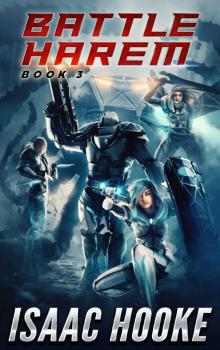 Battle Harem 3
Battle Harem 3 The Ethan Galaal Series: Books 1 - 3
The Ethan Galaal Series: Books 1 - 3 Reloaded
Reloaded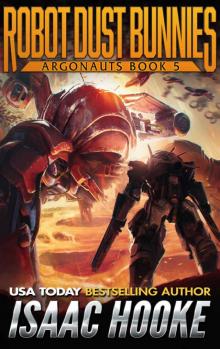 Robot Dust Bunnies (Argonauts Book 5)
Robot Dust Bunnies (Argonauts Book 5) Battle Harem
Battle Harem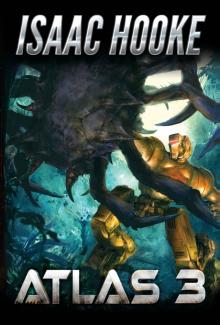 ATLAS 3 (ATLAS Series Book 3)
ATLAS 3 (ATLAS Series Book 3) Argonauts 2: You Are Prey
Argonauts 2: You Are Prey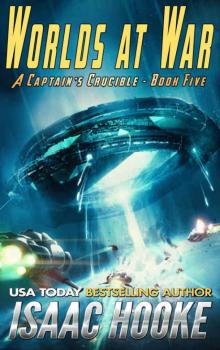 Worlds at War (A Captain's Crucible Book 5)
Worlds at War (A Captain's Crucible Book 5)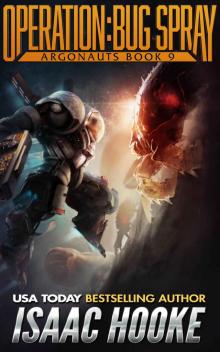 Operation: Bug Spray (Argonauts Book 9)
Operation: Bug Spray (Argonauts Book 9) Battle Harem 2
Battle Harem 2 Redeemed (Bolt Eaters Trilogy Book 3)
Redeemed (Bolt Eaters Trilogy Book 3)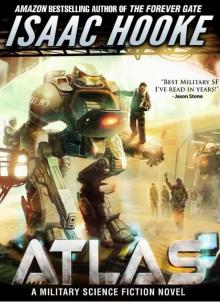 Atlas
Atlas Argonauts 1: Bug Hunt
Argonauts 1: Bug Hunt Reactivated (Bolt Eaters Trilogy Book 1)
Reactivated (Bolt Eaters Trilogy Book 1) Alien War Trilogy 3: Titan
Alien War Trilogy 3: Titan Flagship (A Captain's Crucible #1)
Flagship (A Captain's Crucible #1)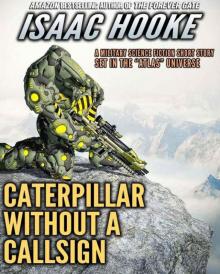 Caterpillar Without A Callsign
Caterpillar Without A Callsign The Forever Gate
The Forever Gate He Who Crosses Death (Star Warrior Quadrilogy Book 3)
He Who Crosses Death (Star Warrior Quadrilogy Book 3) Reforged (Bolt Eaters Trilogy Book 2)
Reforged (Bolt Eaters Trilogy Book 2) Refurbished
Refurbished Reloaded (AI Reborn Trilogy Book 2)
Reloaded (AI Reborn Trilogy Book 2) He Who Crosses Death
He Who Crosses Death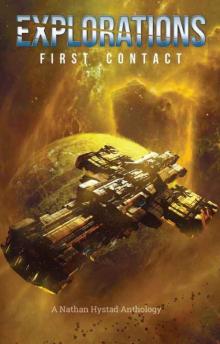 Explorations: First Contact
Explorations: First Contact Planet Killer (A Captain's Crucible Book 4)
Planet Killer (A Captain's Crucible Book 4)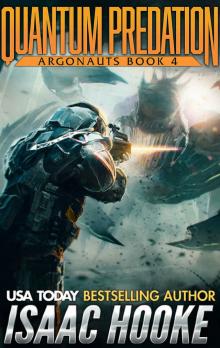 Quantum Predation (Argonauts Book 4)
Quantum Predation (Argonauts Book 4) Clandestine-IsaacHooke-FreeFollowup
Clandestine-IsaacHooke-FreeFollowup The Last Stand (The Forever Gate Book 9)
The Last Stand (The Forever Gate Book 9) City of Phants (Argonauts Book 6)
City of Phants (Argonauts Book 6)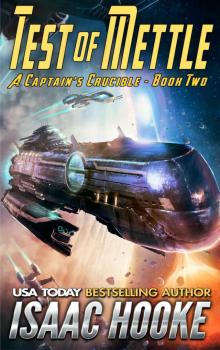 Test of Mettle (A Captain's Crucible Book 2)
Test of Mettle (A Captain's Crucible Book 2)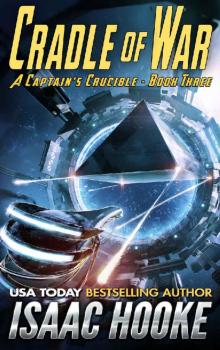 Cradle of War (A Captain's Crucible Book 3)
Cradle of War (A Captain's Crucible Book 3) Rade's Fury (Argonauts Book 7)
Rade's Fury (Argonauts Book 7) Rebirth (The Forever Gate Book 6)
Rebirth (The Forever Gate Book 6) The Forever Gate Compendium Edition
The Forever Gate Compendium Edition Mechs vs. Dinosaurs (Argonauts Book 8)
Mechs vs. Dinosaurs (Argonauts Book 8) Alien War Trilogy 2: Zeus
Alien War Trilogy 2: Zeus ATLAS 2 (ATLAS Series Book 2)
ATLAS 2 (ATLAS Series Book 2)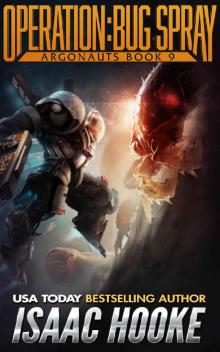 Operation_Bug Spray
Operation_Bug Spray